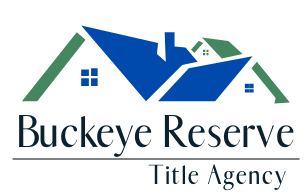Risks Covered by Title Insurance
Title Insurance is the application of principles of insurance risk and risk management incident to real estate titles, but unlike other types of insurance, it protects against losses arising in the future out of what has happened in the past. The title company minimizes its risk by a requisite title examination to identify its risk. Title insurance does not eliminate risk but can protect the insured from the uncertainty of hidden defects by accepting the transfer of the insured’s risk.
Covered risks vary slightly depending on which type of policy is issued but essentially all policies cover the same basic risks such as:
Title being vested other than as stated in Schedule A.
Any defect in lien or encumbrance on the Title such as:
Forgery, fraud, undue influence, duress, incompetency, incapacity, or impersonation
Failure of any person or entity to have authorized a transfer or conveyance
A document affecting Title not properly created, executed, witnessed, sealed, acknowledged, notarized, or delivered
Failure to perform those acts necessary to create a document by electronic means authorized by law
A document executed under a falsified, expired, or otherwise invalid power of attorney
A document not properly filed, recorded, or indexed in the Public Records including failure to perform those acts by electronic means authorized by law
A defective judicial or administrative proceeding
The lien of real estate taxes or assessments imposed on the Title by a governmental authority due or payable, but unpaid
Any encroachment, encumbrance, violation, variation, or adverse circumstance affecting the Title that would be disclosed by an accurate and complete land survey of the land
Unmarketable Title
No right of access to and from the land
The violation or enforcement of any law, ordinance, permit, or governmental regulation (including those relating to building and zoning) restricting, regulating, prohibiting, or relating to:
The occupancy, use, or enjoyment of the land
The character, dimensions, or location of any improvement erected on the land
The subdivision of land
Environmental protection
An enforcement action based on the exercise of a governmental police power if a notice of the enforcement action, describing any part of the land, is recorded in the Public Records
The exercise of the rights of eminent domain if a notice of the exercise, describing any part of the land, is recorded in the Public Records
Any taking by a governmental body that has occurred and is binding on the right of a purchaser for value without knowledge
Title being vested other than Schedule A or being defective:
As a result of the avoidance in whole or in part, or from a court order providing an alternative remedy, of a transfer of all or any part of the title to or any interest in the land occurring prior to the transaction vesting Title as shown in Schedule A because that prior transfer constituted a fraudulent or preferential transfer under federal bankruptcy, state insolvency, or similar creditors’ rights laws
Because the instrument of transfer vesting Title as shown in Schedule A constitutes a preferential transfer under federal bankruptcy, state insolvency, or similar creditors’ rights laws by reason of the failure of its recording in the Public Records to be timely or to impart notice of its existence to a purchaser for value or to a judgment or lien creditor.
To learn more about how title insurance can protect you and your property, call or e-mail our office at 330.686.2282 or kaley@buckeyereserve.com

